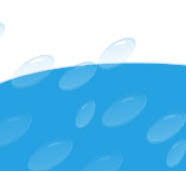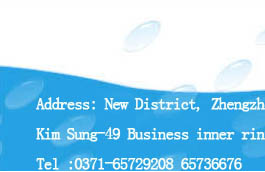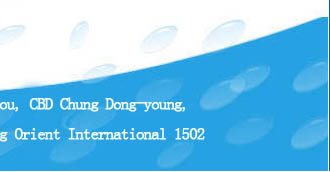Purified water is produced based on reverse osmosis technology,due to low requirements for feed water,tap water or ground water is usually available for water sources.
What is RO ?
Natural osmosis occurs when a semi-permeable membrane separates two fluids of different salinity. The fluid with the lower salinity will pass through the membrane until the salt solution becomes equal on both sides of the membrane.
Reverse osmosis (RO)is the reverse of normal osmosis process,it occurs when the water is forced by pressure from higher salinity solution to permeated water side across a semi-permeable membrane,the memebrane allows the passage of water, but not impurities, organics, ions etc. The rejection rate can usually reach above 97%, and the highest will reach 99.8%.
Two Stage RO
RO can be used as one or two-stage process, depending on conditions of raw water, in the two stage process, the permeated water from first stage is sent directly to the second RO, producing a higher purity water than is possible with one stage alone.
If the electrical conductivity of raw water is above 400μs/cm, to meet the national standards, the purified water will be produced through two stage RO system,if under 400μs/cm, one stage RO system is available.
The contaminants such as inorganic salt, bacterias,virus, glucides,amino acid will be removed through RO system, the final permeated water can be fully comply with the national standards of GB17323-1998、GB17324-1998 etc.
RO system can be widely used in various water plants, pharmaceutical and biotechnology processes, chemical industry, food & beverage production, laboratory, manufacturing industry as well as brackish water desalination, etc.
We use the membrane elements ESPA series from Hydranautics Company featuring high performance, ultra low pressure needs, high productivity and energy savings, 4 inches and 8 inches have been frenquently used.
RO Membrane Elements:
|
|
4 Inches |
8 Inches |
|
Model(ultra low pressure, energy-saving ) |
ESPA1 |
ESPA2 |
ESPA3 |
ESPA4 |
ESPA1 |
ESPA2 |
ESPA2+ |
ESPA3 |
ESPA4 |
|
Specification |
OD / Length(mm) |
φ100.1/1016.0 |
φ201.9/1016.0 |
|
Wet Weight -kg |
3.8 (average) |
16.3 (average) |
|
Active Area -ft2 |
85 |
400 |
|
Performance |
Rejection Rate -% |
Average |
99.2 |
99.6 |
98.5 |
99.2 |
99.3 |
99.6 |
99.6 |
98.5 |
99.2 |
|
Minimum |
99.0 |
99.4 |
98.0 |
99.0 |
99.0 |
99.5 |
99.5 |
98.0 |
99.0 |
|
Permeate Flow |
gpd |
2600 |
1900 |
3000 |
2500 |
12000 |
9000 |
11000 |
14000 |
12000 |
|
m3/d |
9.8 |
7.2 |
11.4 |
9.46 |
45.4 |
34.1 |
41.6 |
53.0 |
45.4 |
|
Membrane Polymer |
Composite Polyamide |
Composite Polyamide |
|
Test Conditions |
Test Solutin |
1500ppm NaCl solution |
500ppm NaCl solution |
1500ppm NaCl solution |
500ppm NaCl solution |
|
Applied Pressure -psi(MPa) |
150(1.05) |
100(0.7) |
150(1.05) |
100(0.7) |
|
Operating Temperature-℃ |
25 |
25 |
|
Permeate Rcovery -% |
15 |
15 |
|
Test Solutin PH Range |
6.5~7.0 |
6.5~7.0 |
|
Application data |
Maximum Applied Pressure - psi(MPa) |
600(4.16) |
600(4.16) |
|
Maximum Feed Flow - gpd(m3/d) |
16(3.6) |
75(17) |
|
Maximum Operating Temperature-℃ |
45 |
45 |
|
Feed Water PH Range |
3.0~10.0 |
3.0~10.0 |
|
Maximum Feed Water Turbidity -NTU |
1.0 |
1.0 |
|
Maximum Feed Water SDI-15mins |
<5 |
<5 |
|
Maximum Chlorine Concentration-ppm |
<0.1 |
<0.1 |
|
Minimum Ratio of Concentrate to Permeate Flow for Any Element |
5:1 |
5:1 |
|
Maximum Pressure Drop for Each Element |
10psi (0.07 MPa) |
10psi(0.07 MPa) |
|
|
|
|
|
|
|
|
|
|
|
|
|
|
|
|
|


